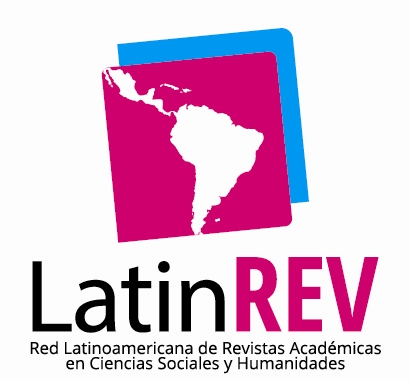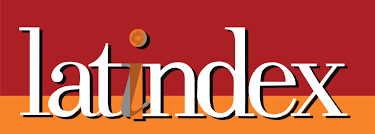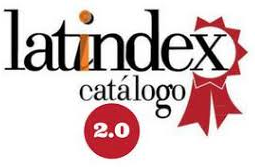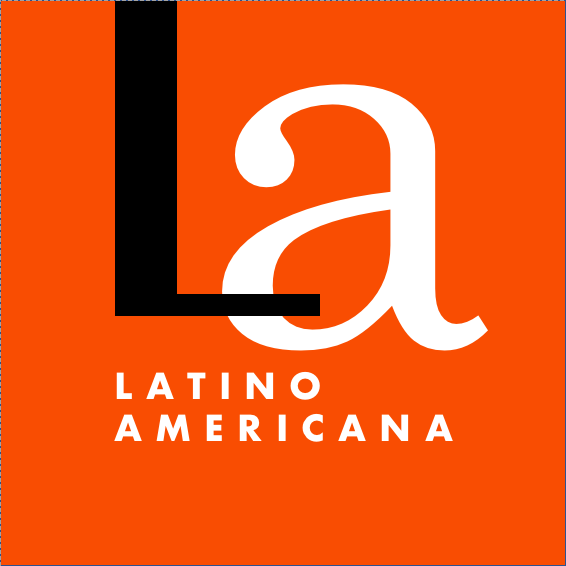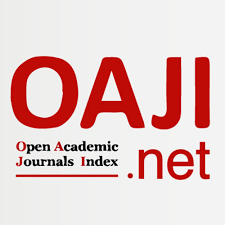Germanity and war culture: Germania magazine’s representations of German militarism in Argentina during the Great War
Abstract
This article is part of a larger project aimed at investigating the representations of the German-speaking community in the context of the Great War as expressed in the magazine Germania. The magazine was published from June 1915 to May 1916, a period in which, although the war had come to a standstill on the western front, Allied and Germanophile propaganda began to recover prominence in the local press in the face of the stagnation of news coverage of the war. Its pages exposed a clear example of community mobilization and proposed to spread through war notes, literary, scientific and recreational articles, an alternative version of the events and German culture, under the pressure of the Allied propaganda that controlled the distribution of foreign news in Argentina. On this occasion, we will analyze how the representations that disputed values allusive to nationality and love for the fatherland associated with German militarism were expressed and how this was represented to counteract the arguments of the enemies.Downloads
References
Barroetaveña, F. (1916). Alemania contra el mundo (4º ed.). Otero & Co.
Bryce, B. (2019). Ser de Buenos Aires. Alemanes, Argentinos y el surgimiento de una sociedad plural 1880-1930. Biblos.
Camacho Arango, C. (2011). Síntesis y perspectiva de los estudios de transferencias militares europeas en Suramérica (1890-1940). Revista de Historia Iberoamericana, 10(2), 40-58.
Carreras, S. (2019). Los emigrados germanohablantes en América del Sur: expresiones e interpretaciones de su compromiso político, en S. Carreras (ed.). Identidad en cuestión y compromiso político. Iberoamericana, 7-18.
Compagnon, O. (2009). L’Euro-Amérique en question. Nuevo Mundo, Mundos Nuevos, (9).
Dick, R. (2010). Los oficiales del Ejército Argentino que se capacitaron en Alemania entre los años 1900-1914 y sus familias. Temas de historia argentina y americana, (16), 176-187.
Esteban Ribas, A. (2014). El desastre de Varos en Germania. Historia Rei Militaris, (7), 58-70.
Fischer, F. (2008). La expansión (1885-1918) del modelo militar alemán y su pervivencia (1919-1933) en América Latina. Revista CESLA, (11), 135-160.
García Molina, F. (2010). La prehistoria del poder militar en la Argentina: la profesionalización, el modelo alemán y la decadencia del régimen oligárquico, Eudeba.
Gliech, O. (2010). Die deuscht-argentinischen Militärbeziehungen (1900-1945). En: Birle, P (Hrsg.). Die Beziehungen zwischen Deustschland und Argentinien, Biblioteca Iberoamericana, 75-96.
González Calleja, E. (2008). La cultura de guerra como propuesta historiográfica: una reflexión general desde el contemporaneismo español. Historia Social, (61), 61-71.
Hoffmann, K. (2009). ¿Construyendo una “comunidad”? Theodor Alemann y Hermann Tjarks como voceros de la prensa germano parlante en Buenos Aires, 1914-1918. Iberoamericana, (33), 121-137.
Mosse, G. (2019). La nacionalización de las masas. Simbolismo político y movimientos de masas en Alemania desde las Guerras Napoleónicas al Tercer Reich. Marcial Pons Historia.
Newton, R. (1977). German in Buenos Aires, 1900-1933. Social change and cultural crisis. University of Texas Press.
Otero, H. (2009). La guerra en la sangre. Los franco-argentinos ante la Primera Guerra Mundial. Sudamericana.
Rinke, S.(2014). The Reconstruction of National Identity: German Minorities in Latin America during the First World War en N. Foote y M. Goebel (eds.), Immigration and national identities in Latin America (pp. 160-181). University Press of Florida.
Rinke, S. (2019). América Latina y la primera Guerra Mundial. Una historia global. Fondo de Cultura Económica.
Sánchez, E. (2014a). Guerra de palabras. Representaciones, debates y alineamientos de la prensa y la opinión pública de Buenos Aires ante la Gran Guerra (1914-1919) [Tesis doctoral]. Universidad de Buenos Aires.
Sánchez, E. (2014b). Pendientes de un hilo: Guerra comunicacional y manipulación informativa en la prensa porteña durante los inicios de la Gran Guerra. Política y cultura, (42), 55-87.
Sánchez, E. (2017). Bohemia anarquista, modernismo y periodismo: las crónicas de Juan José Soiza Reilly durante la Primera Guerra Mundial. Izquierdas, (35), 98-123.
Shirkin, S. (2013). Los centros sociales recreativos y filodramáticos de las colectividades en el Buenos Aires finisecular. El caso del Salón del Príncipe Jorge. XIV Jornadas Interescuelas/Departamentos de Historia. Universidad Nacional de Cuyo, Mendoza, Argentina.
Stein, O. (2021). Pre-war Military Planning (Germany) en U. Daniel et al. (eds.), 1914-1918-online. International Encyclopedia of the First World War. Freie Universität Berlin.
Tato, M. I. (2011). El llamado de la patria. Británicos e italianos residentes en la Argentina frente a la Primera Guerra Mundial. Estudios Migratorios Latinoamericanos, (71), 273-292.
Tato M. I. (2017). La trinchera austral. La sociedad argentina ante la Primera Guerra Mundial. Prohistoria.
Tato, M. I. (2018). La batalla por la opinión pública. El diario argentino La Unión durante la Gran Guerra en O. Compagnon et al. (dir.), La Gran Guerra en América Latina. Una historia conectada (pp. 307-320). CEMCA.
Von Der Goltz, C. (1927). La Nación en armas. Un libro sobre organización de ejércitos y conducción de guerra en nuestros tiempos (6ta ed.). Tip. de L. Bernard.
Copyright (c) 2024 Marcelo Alejandro Ingrassia

This work is licensed under a Creative Commons Attribution-NonCommercial 4.0 International License.

Historia & Guerra uses an international license Attribution-NonCommercial 4.0 International (CC BY-NC 4.0).
You are free to:
- Share — copy and redistribute the material in any medium or format.
- Adapt — remix, transform, and build upon the material.
- The licensor cannot revoke these freedoms as long as you follow the license terms..
Under the following terms:
Attribution — You must give appropriate credit, provide a link to the license, and indicate if changes were made. You may do so in any reasonable manner, but not in any way that suggests the licensor endorses you or your use.
NonCommercial — You may not use the material for commercial purposes.
No additional restrictions — You may not apply legal terms or technological measures that legally restrict others from doing anything the license permits.
Notices:
You do not have to comply with the license for elements of the material in the public domain or where your use is permitted by an applicable exception or limitation.
No warranties are given. The license may not give you all of the permissions necessary for your intended use. For example, other rights such as publicity, privacy, or moral rights may limit how you use the material.
The author retains all rights to his work without restriction and grants Historia & Guerra the right to be the first publication of the work. Likewise, the author may establish additional agreements for the non-exclusive distribution of the version of the work published in the Journal (for example, placing it in an institutional repository or publishing it in a book), with the acknowledgment of having been first published in this journal. Use of the work for commercial purposes is not permitted.
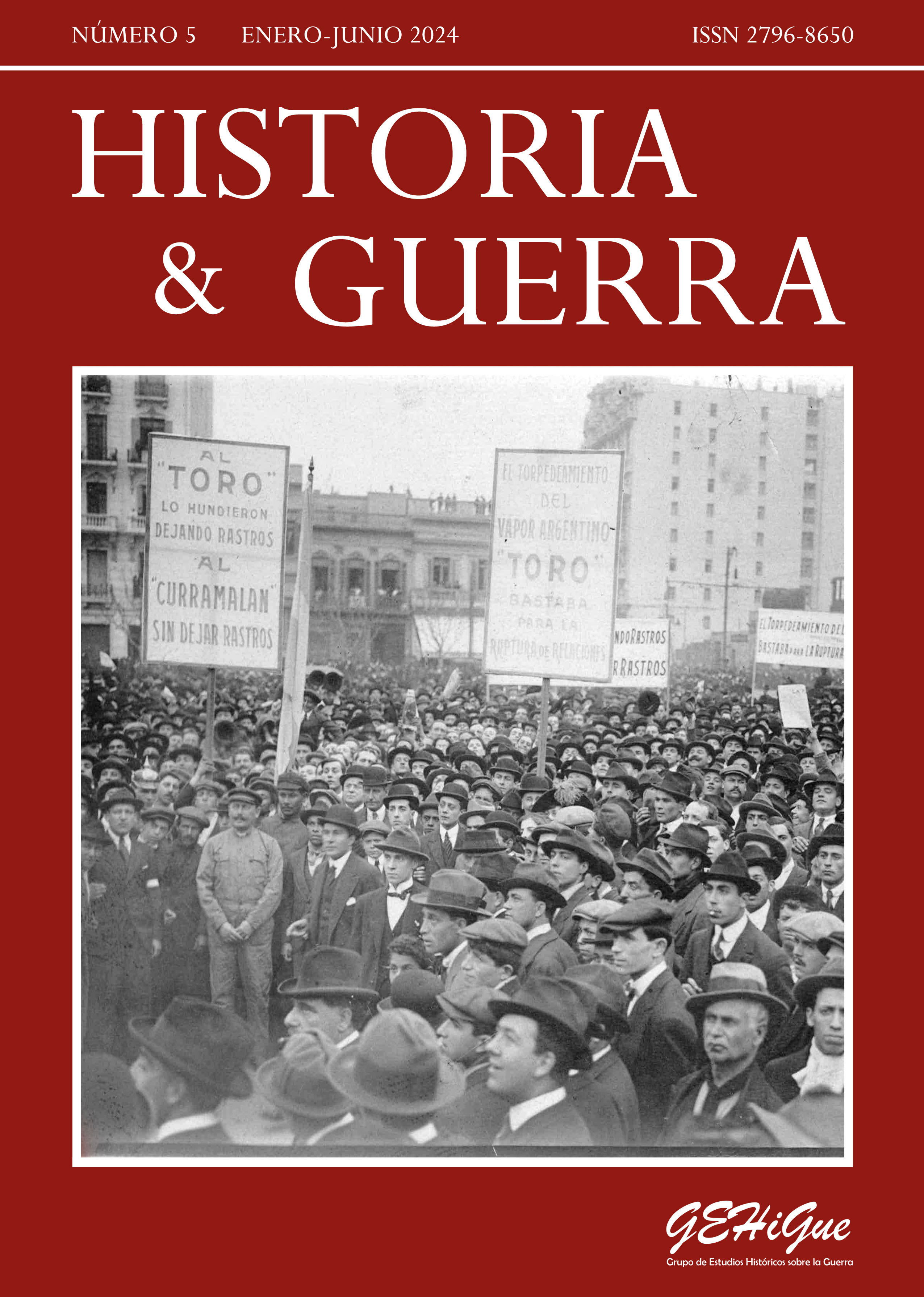

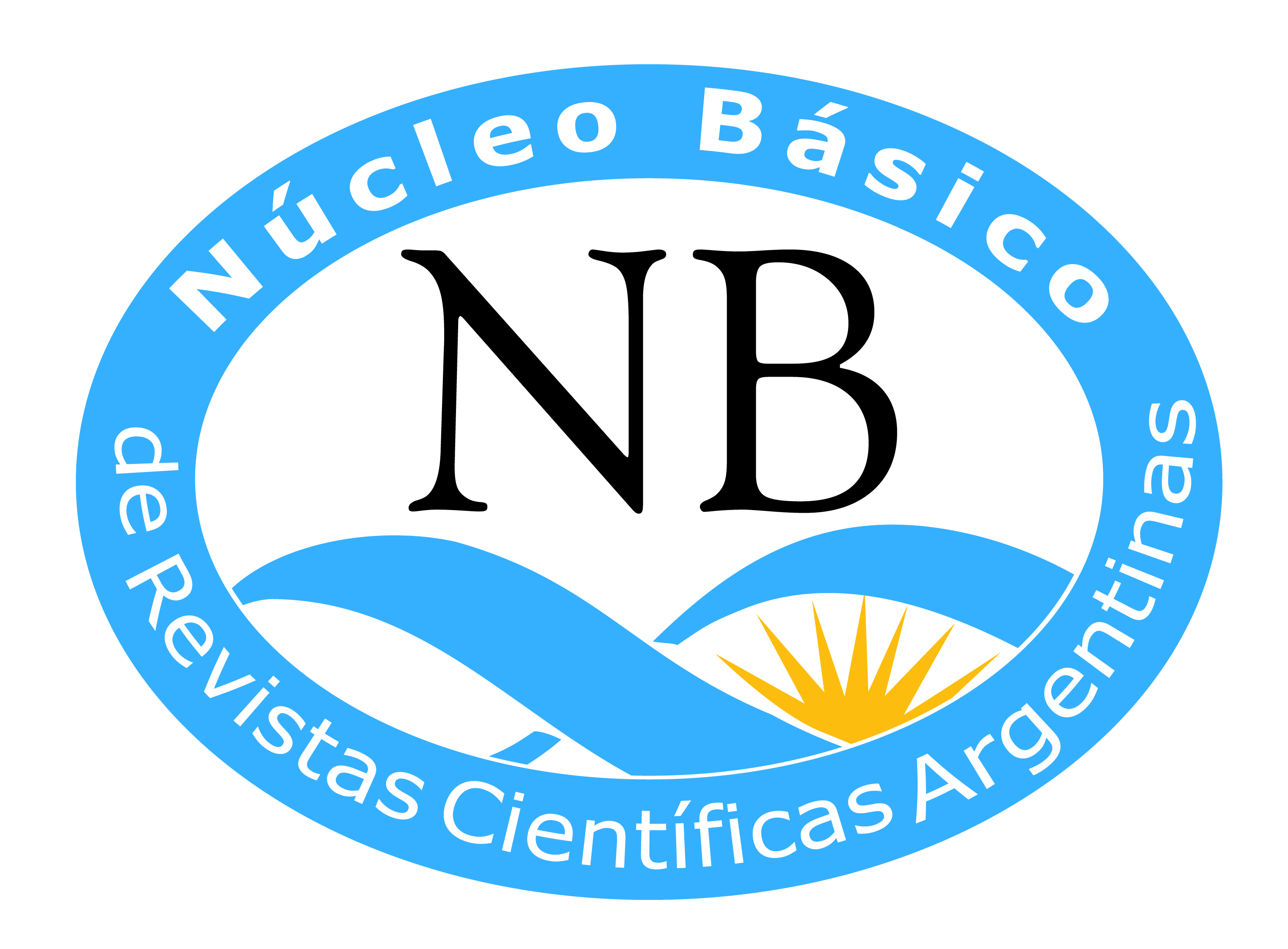





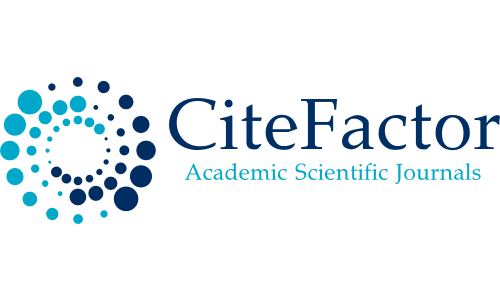
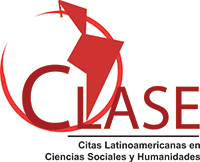



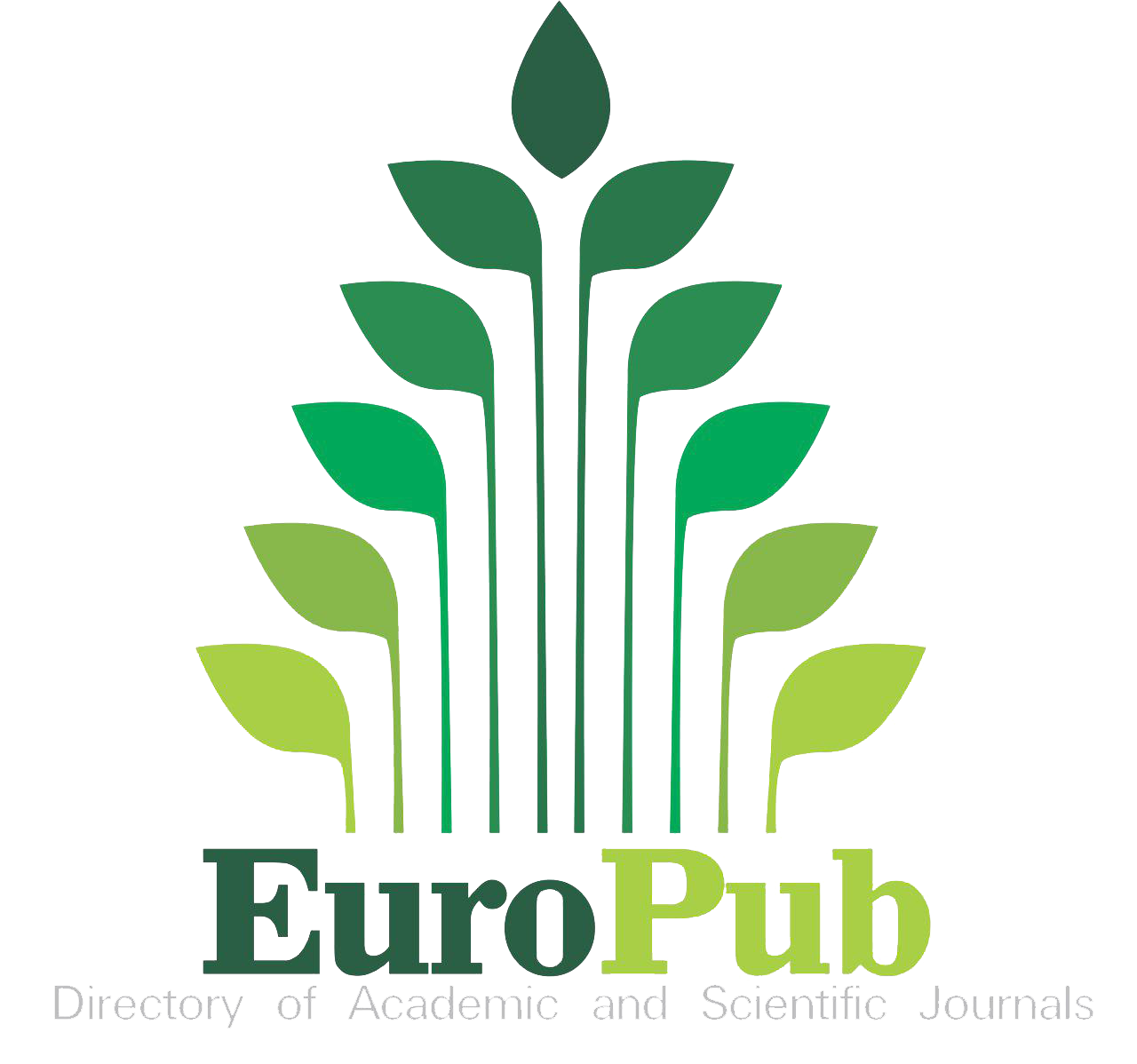
.jpg)
